X-Ray: An Initial Screening Tool in the Diagnosis of Mucormycosis
- June 10,2021
- 2 Min Read
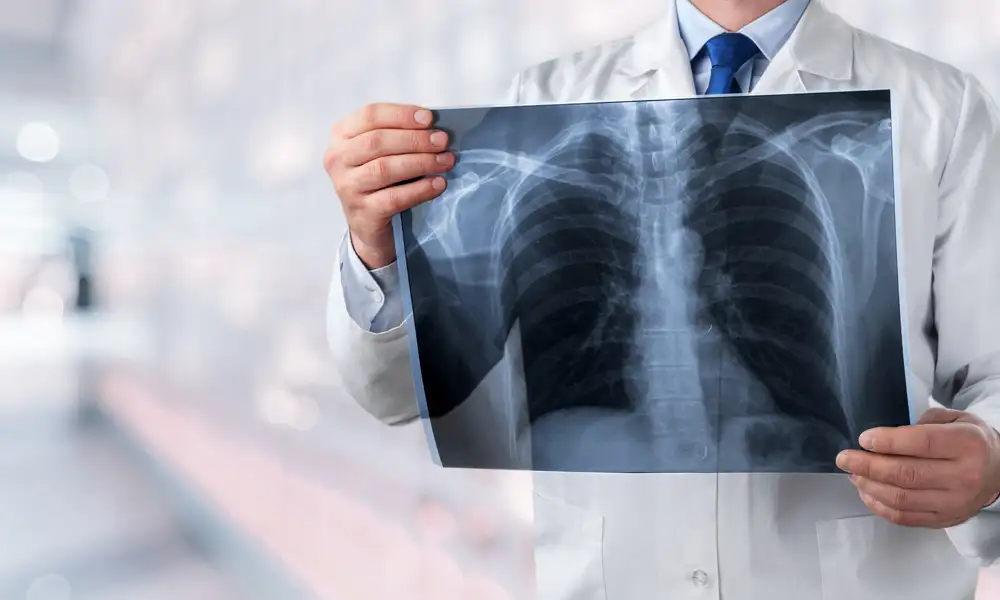
Early diagnosis of mucormycosis is crucial to survival because of the high morbidity and mortality rates in infected patients. The imaging findings can be non-specific initially, but there are some specific radiologic clues that can aid diagnosis. Because early treatment with antifungal agents improves survival, the radiologist can play a key role in treatment of the patient. Therefore, knowledge of its radiologic appearance and evolution is important in deciding the management.
RHINO-CEREBRAL MUCORMYCOSIS
Paranasal sinuses are often the most common site initially involved in mucormycosis. X-ray PNS findings:
- Varying degree of opacification of sinuses.
- Rim of soft-tissue thickness along the paranasal sinuses.
- Complete sinus opacification, gas-fluid levels and obliteration of the nasopharyngeal tissue planes.
PULMONARY MUCORMYCOSIS
Intrapulmonary Imaging Manifestations: X-ray Chest Findings:
- Reverse Halo Sign: Ground-glass lesion with a peripheral rim of consolidation (almost always pathognomonic for Mucormycosis)
- Peribronchial ground glass opacity: early sign
- Cavitation: early sign
- Lobar and segmental consolidation with absence of air bronchograms
- Unilateral infection: can quickly progress to contralateral lung if untreated
- Multifocal pneumonia pattern with bilateral consolidation: has a high correlation with increased mortality
- Multi-lobar distribution: has a high correlation with increased mortality
- Single or multiple nodules and masses are also common features
- Necrosis (because the fungus tends to invade the vasculature)
- Pleural thickening or effusion: May indicate spread in to pleural cavity
- Subcutaneous emphysema: Air in the intercostal space or subcutaneous soft tissues indicates chest wall spread.
DIAGNOSTIC CHALLENGES
One of the diagnostic challenges in patients suspected of having invasive fungal pneumonia is differentiating Invasive Pulmonary Aspergillosis (IPA) from Pulmonary Mucormycosis (PM).
Imaging findings that are more suggestive of PM than IPA include:
- Presence of Reverse halo sign
- Presence of more than 10 lesions
- Presence of pleural effusion
FEW TYPICAL X RAY PATTERNS OF PULMONARY MUCORMYCOSIS (PM)
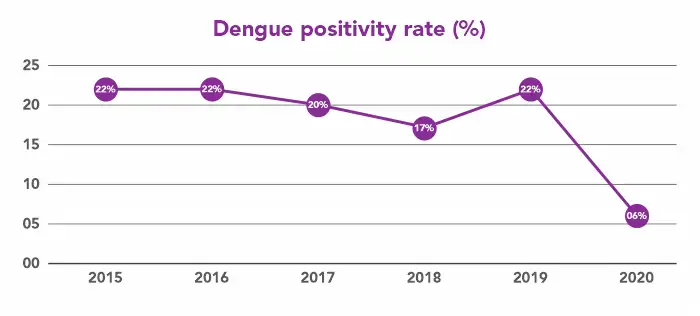
PM appearing with the reverse halo sign in a 68-year-old woman. Frontal radiograph shows a right upper lobe consolidation.
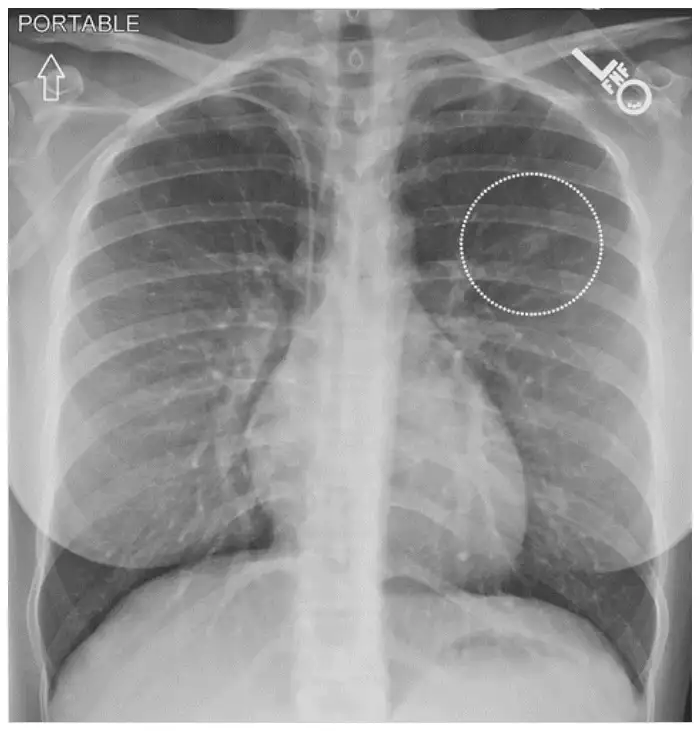
Frontal radiograph shows a nodular opacity (dotted circle) in the left upper lung.
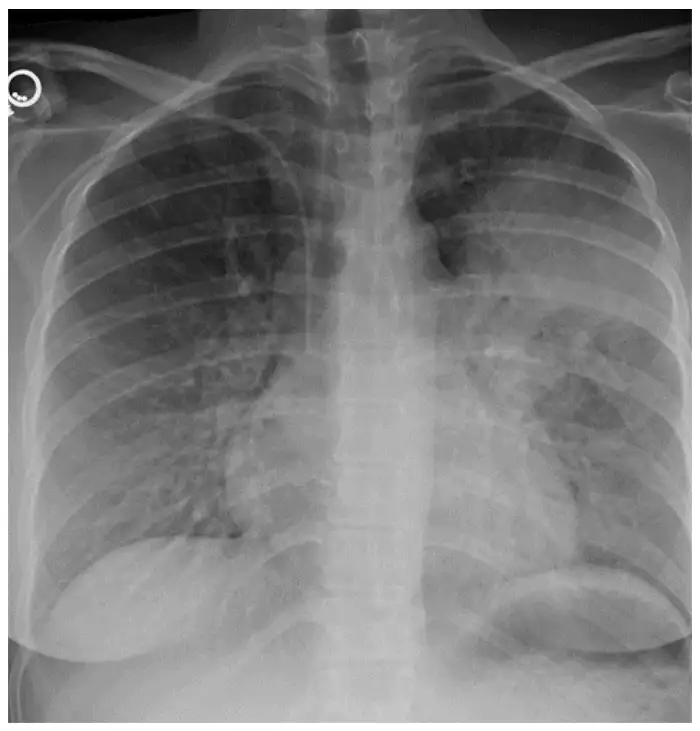
Left upper lobe lesion with a mass-like consolidation.
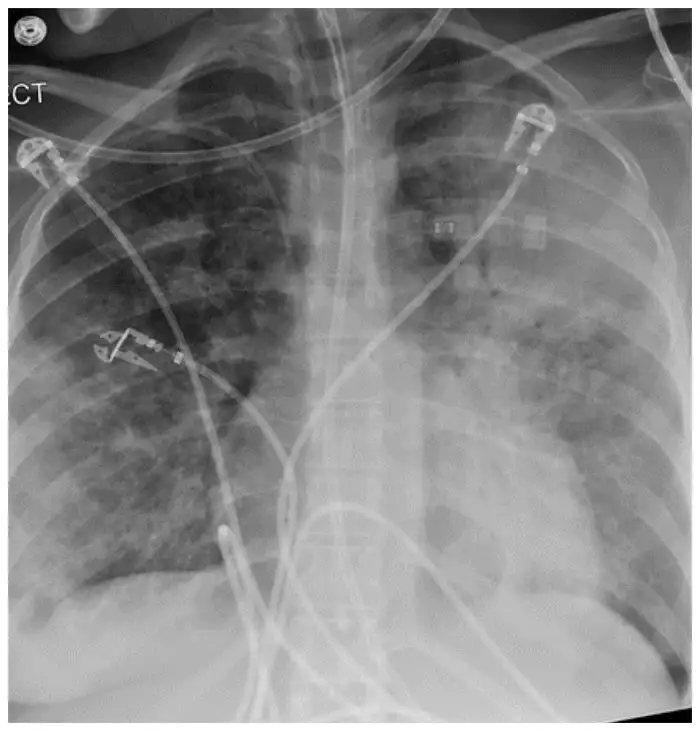
Multifocal pneumonia – poor prognosis.
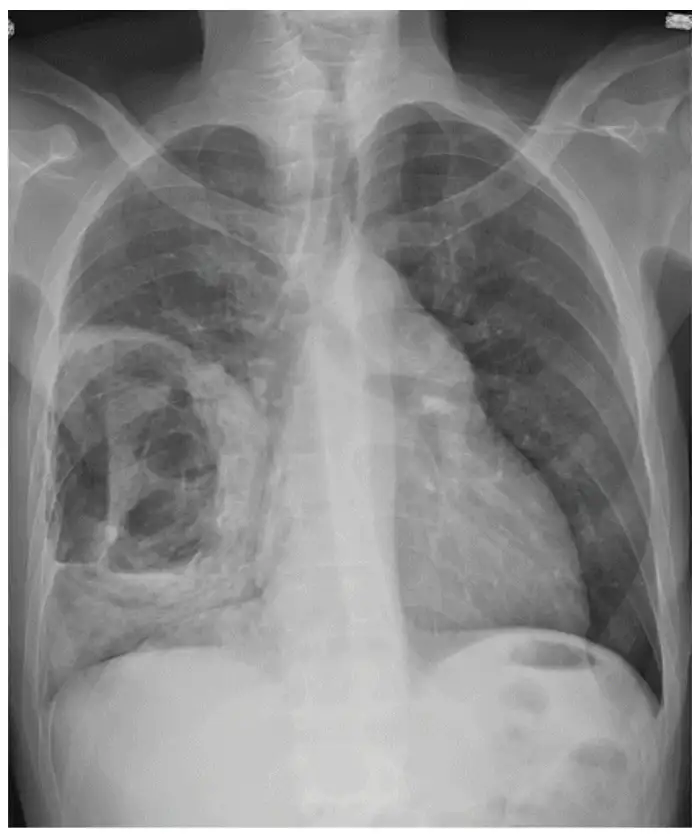
Chest wall spread of PM in a 44-year-old man. Frontal radiograph shows a large cavity with an air-fluid level in the right lower lung. There is subcutaneous emphysema in the adjacent right chest wall.
In conclusion, X-ray can be a useful adjunct tool in the early diagnosis of Mucormycosis.
Want to book a test? Fill up the details & get a callback
Most Viewed
Premarital Health Screening
- 20 Min Read
Typhoid - Signs and Symptoms
- 3 Min Read
Home Isolation Guidelines - Covid-19 Care
- 5 Min Read
HLA B27 Detection: Flow Cytometry & PCR
- 1 Min Read














